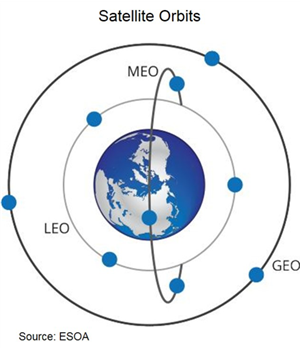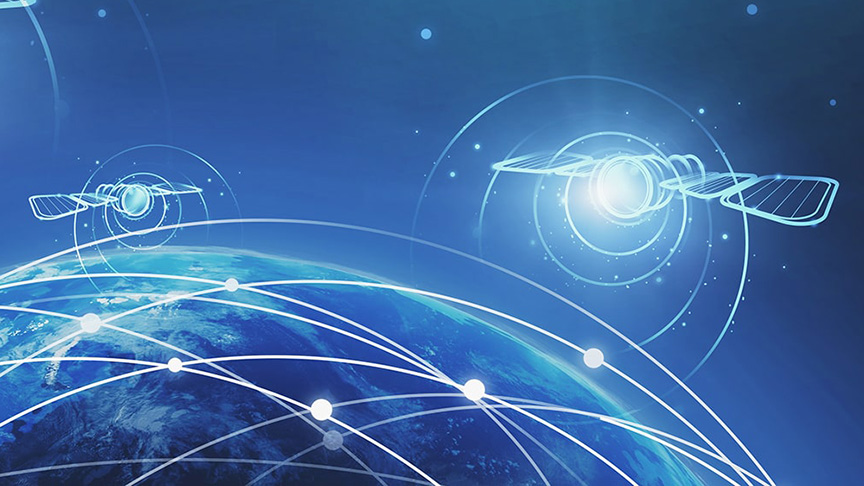Space may not be the final frontier – but it is certainly becoming the next frontier for communications services as both interest and investment in low Earth orbit (LEO) satellites is soaring to new heights.
According to the Space Investment Quarterly published by Space Angels, $1.3 billion was invested in space companies in in the second quarter of 2019, bringing YTD funding to $2.9 billion, representing 88% of the total amount invested in 2018.
While many of us have a fascination with space, it is the world’s billionaires (Elon Musk, Jeff Bezos, Richard Branson, for example) that are combining their vast wealth with modern technology to expand their addressable markets and truly take on a global (even galactic) presence.
The consensus is that satellite broadband will be an important enabler of the next generation of broadband infrastructure, making it possible to provide connectivity to the billions of people that are currently unserved or underserved, while opening up new opportunities for advanced broadband services, such as AI, autonomous vehicles, virtual reality and video, to name a few.
Broadband for everyone … everywhere
According the ITU’s Broadband Commission State of Broadband Development report for 2018, 52% (or 3.7 billion) of the world’s population currently remain unconnected. The idea of providing broadband using LEO satellites is not a new concept – but what has changed is both the focus (data vs. telephony) and the technology.
The increasing demand for broadband data, combined with improved technology, software-defined network control and reduced launch costs has incentivized a new generation of space startups who are innovating in the realms of nano-satellites and small reusable launch vehicles.
This has resulted in a number of companies (most notably Space X, OneWeb, TelSat and Amazon) entering this segment with plans to deploy large-constellations of small satellites in low Earth orbit to deliver telecommunications and internet services. The goal of these projects is to help close the digital divide by offering fixed broadband communications to rural and hard-to-reach areas; enable mobile network operators to expand wireless services; as well as provide high-throughput mobile broadband connectivity for aircraft, maritime and land vehicles.
The scope and scale of these projects is impressive. SpaceX, with its Starlink project, has already launched its first 60 of nearly 12,000 planned satellites by 2027. Amazon recently announced its plans to launch over 3,200 satellites. Canada’s Telesat will deploy near 300, while OneWeb plans to deploy 650 satellites, with its first six launched in February 2019. All companies are expecting initial commercial services to be available early in the next decade.
Early tests show promise
Telesat successfully demonstrated that LEO satellites can provide effective backhaul transport for mobile network operators, including advanced backhaul solutions for 5G. Its recent test results confirmed network latency of 18-40 milliseconds. Additionally, the demonstration supported video chatting, web browsing and simultaneous streaming of up to 8K video. The team also transferred 4K video to the edge of the 5G network, demonstrating a key 5G future use case.
OneWeb announced the successful test of its six satellites in low Earth orbit. All satellites delivered high-speed, low-latency services, with speed of more than 400Mbit/s, which enabled the fastest real-time video streaming in full HD 1080p at latency of less than 40 milliseconds.
Why LEO?
Satellites are typically deployed into three key orbits: low Earth, medium Earth and geosynchronous.

The key differences between the different orbits is altitude, latency and coverage. The further away, the longer it takes a satellite to revolve around the earth. For instance, its takes 24 hours for a GEO satellite to revolve, while an MEO ranges from 2 to 24 hours. Due to its much lower altitudes, LEO satellites take about 90 minutes. From a latency perspective, GEO is around 500 milliseconds, while LEO is under 50 milliseconds. Finally, due to the fact that GEO is typically placed in a fixed position, its coverage is reduced, while LEO satellite constellations are able to provide continuous and uninterrupted coverage over a significantly wider area.

Another key advantage is that the rockets needed to launch them are also smaller and cheaper, while the cost to produce satellites is also on the decline. According to Morgan Stanley, the cost of launching a satellite has declined to about $60 million from $200 million because of reusable rockets, with a potential drop to as low as $5 million. Satellite mass production could decrease the cost from $500 million per satellite to $500,000.
Both SpaceX and Blue Origin believe a fully reusable rocket is the “pivotal breakthrough” needed to substantially reduce the cost of space access by “building a road to space.” Both companies are developing rockets with vertical take-off, vertical landing architectures that enables the reuse of the first stage of the launch vehicles with minimal refurbishment. Both companies firmly believe that true operational reusability is the only way to lower the cost of access to space. Things are only impossible until they're not.
Challenges and concerns
Of course, the biggest challenge is delivering on its promise. Many of these projects are dependent on declining costs with most pinning their hopes on reusable rockets. If this technology does not prove viable or meet projected cost targets – many of these projects will simply make no financial sense – particularly since many of the markets these services are targeting are price sensitive. In addition, significant delays in launch timeframes would also impact the business model.
Similar to the blanketing of cities with small cells for 5G, the launch of these mega-constellations will create a considerable amount of orbital congestion, greatly increasing the risk of collisions. It will be necessary to ensure that we don’t pollute space the same way we have polluted our lands and oceans.
By fully embracing the phrase “live long and prosper,” this new round of entrants into the internet space (pun intended) offer a promising future to fully connect the citizens of the world, while creating new business opportunities for the ecosystems that support this vision. Perhaps resistance is futile.
As Captain Picard would say: Make it so.
